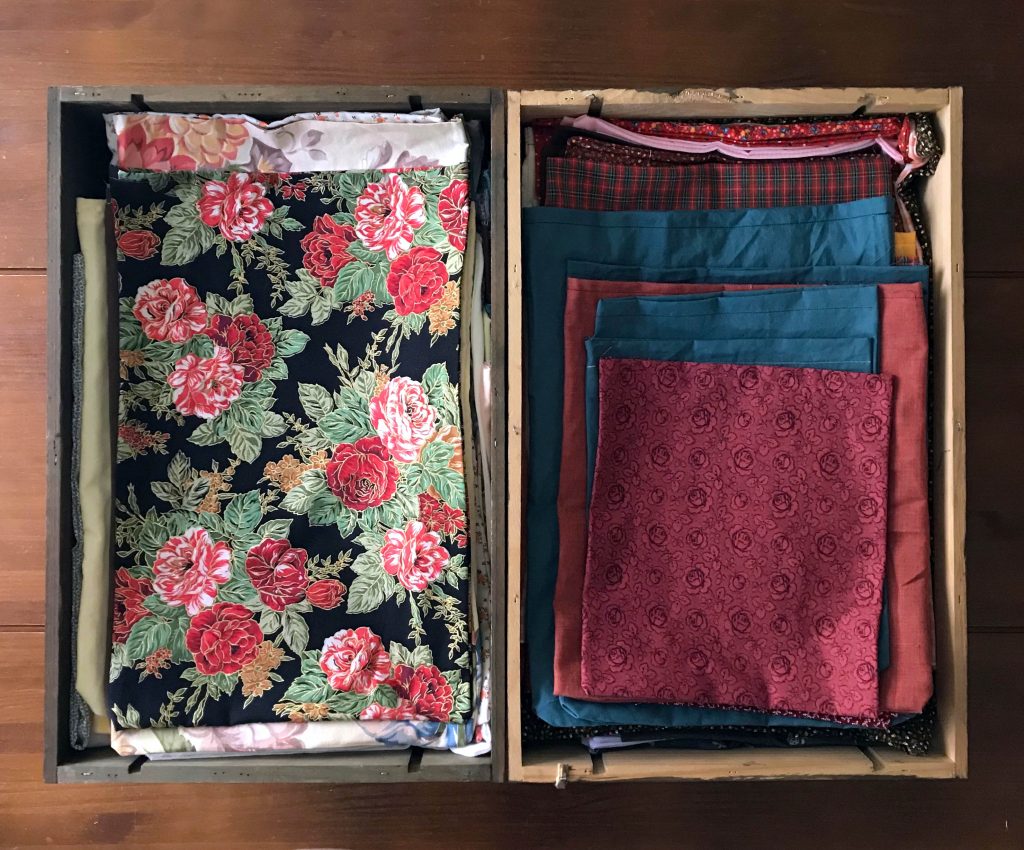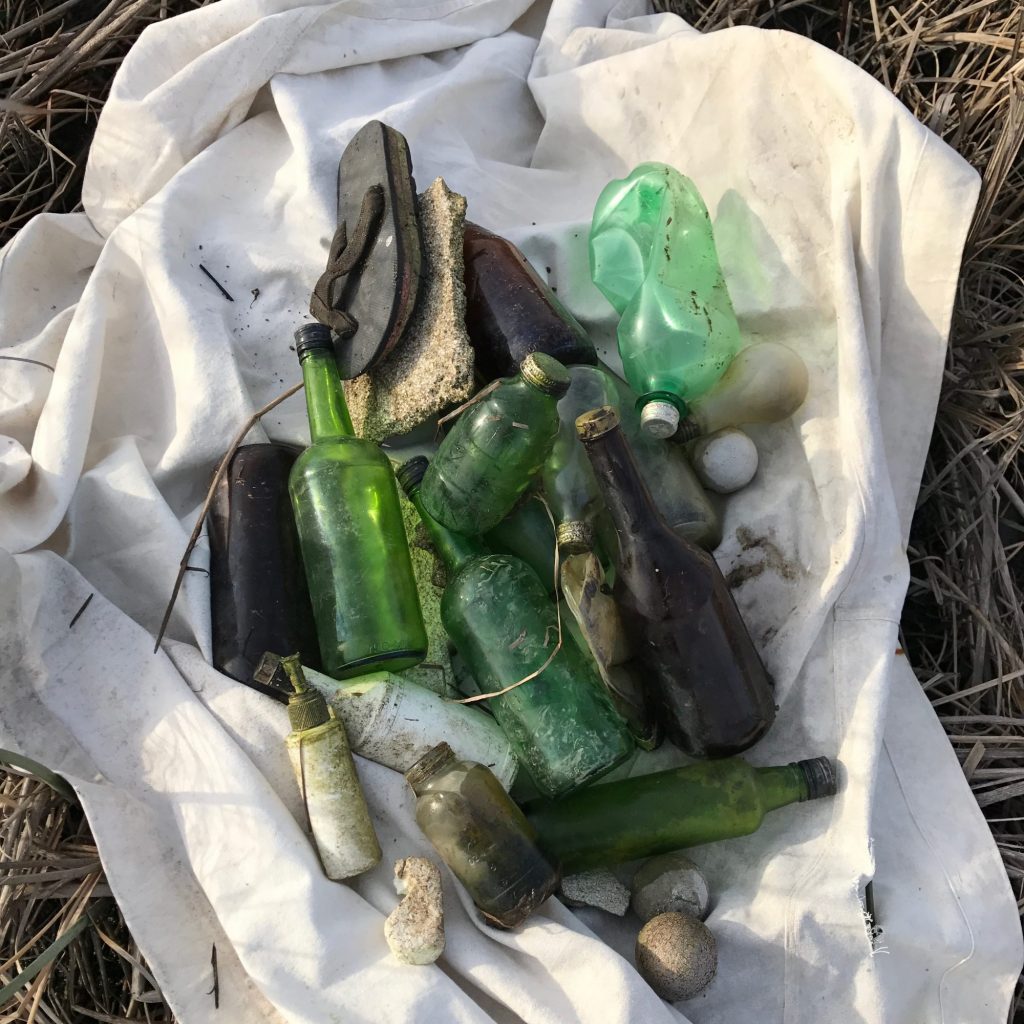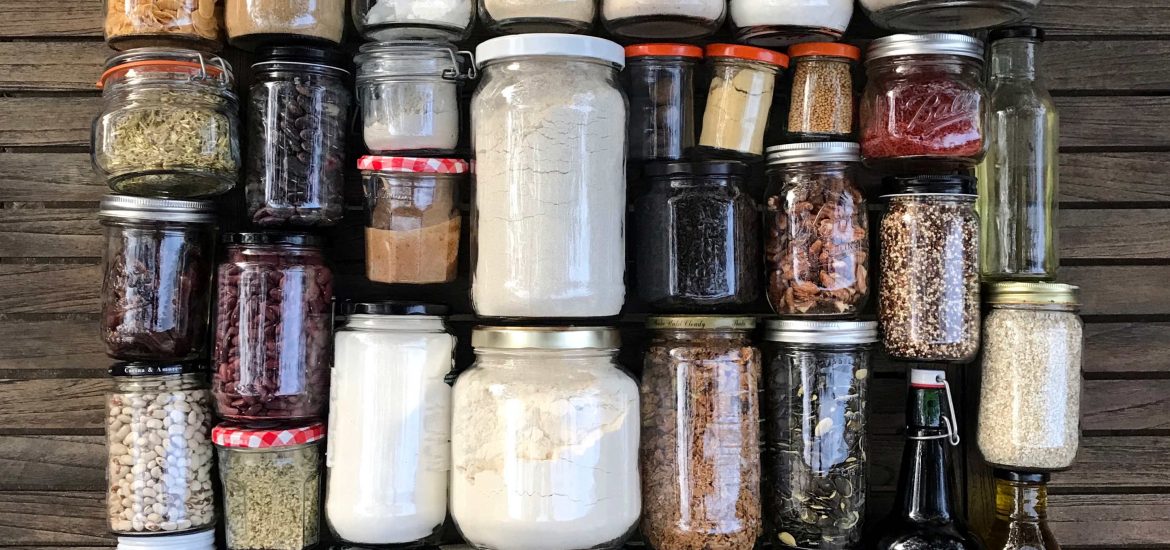People leave lots of comments on Instagram when I post videos and pics of my zero-waste community in my Stories, especially when we get together to work on—or give away—our cloth produce bags at the farmers’ market.
- “How do I find a group where I live?”
- “I wish I had a community like this in my city!”
- “Do you all live together in a zero-waste community?!”
- “I would like to start my own group but I don’t know anyone who would be interested.”
- “May I please join?”
When Christine of Snapshots of Simplicity first asked me to join a zero-waste meetup group, I wondered what we would do in the group—sit around and talk trash about waste while drinking out of our thermoses? But I have to say that of all the discoveries I’ve made on the zero-waste path, finding this group of people ranks up near the top.
I love my zero-waste community. I’ve made new friends and met kindred spirits. When we get together, we have fun while we’re productive. To find a similar group near you, search Meetup in your city. Use terms like “zero waste,” “sustainability,” “climate change” and so on. If you don’t find a specifically zero-waste group, you’ll certainly find some like-minded people who may want to join a zero-waste group if you decide to start one.
In addition to my zero-waste community, I live in an intentional community. You can read about that here. My dream would be to build a zero-waste intentional community. I’ve looked at land online and dreamt of doing this—creating a zero-waste Utopia. I don’t think I could undertake something so huge though.
Community can help mitigate so many environmental problems. Disconnected from one another—either in our single-family homes, behind screens, working constantly or all of the above—many of us try to consume our way to happiness. And in a more concrete example, living apart from each other forces us each to buy our own lawnmower (unless we opt for goats or ground cover but you get the idea…). Working and living together in small communities gives us purpose and meaning. And it’s a lot harder to sell people more stuff they don’t need if they have purpose and meaning in their lives.
How to start a zero-waste community
1. Create a Meetup group
Our group started on Meetup but it may close later this month. The organizer stepped down and at a cost of $15/month, none of us wants to take over. So the group may move to a closed Facebook group.
2. Ask on social media
You really need only a couple of people to get started. Ask your friends, family and coworkers on social media if they would like to join a group. Once you have a few takers, set up a Facebook group for your community.
3. Find members at your place of worship, at work and in your neighborhood
If you belong to one, I think a church might be your best bet for finding recruits. The destruction of the environment is a moral issue that affects the poor and marginalized most. If you belong to one, I think a church might be your best bet for finding recruits. The destruction of the environment is a moral issue that affects the poor and marginalized most. We send our waste to developing countries and call that “recycling,” offshore our pollution by having most of our widgets manufactured in and shipped from Asia and, back home in the US, place polluting plants smack dab in neighborhoods where the majority of the residents are low-income or people of color.
Our common home is being pillaged, laid waste and harmed with impunity. Cowardice in defending it is a grave sin.” — Pope Francis, Santa Cruz, Bolivia, July 9, 2015
4. Spread the word
Share news about your group in your social media feeds and tag others who might be interested or who can help get the word out. People occasionally will tag me in an Instagram Story about their zero-waste group. If I see their post, I’ll share it with my audience in the hopes that some of my followers in their area will view it.
5. Keep a list
However you find people to join your group, keep track of their emails in a folder or newsletter list or a Google doc or anywhere really so you can easily organize events. People have joined my sewing group through Meetup, Instagram, Facebook and—believe it or not—in person :O Without my list, I would find it impossible to keep track of everyone.
Activities for your new community
Before you have your first event—in order to entice new members—come up with some ideas for the activities you will organize and promote them. Below are some events that I’ve organized or attended and others that I want to plan.
1. Community swap
Bring down capitalism one swap at a time! I’ve organized a couple of these and have found such good stuff—and unloaded stuff I no longer wanted. On your Facebook page, Meetup event page or shared Google Doc that you use to organize your event, do some pre-swap swapping.
Ask people to list what they want and what they have to give away. This will give attendees an idea of what to bring. At my last produce bag sewing event, a few of us brought things we thought other attendees could use. I unloaded some jars and fabric. I think I’ll incorporate swapping into all or our future sewing sessions.
Read more about organizing a swap here.
2. Produce bag sewing
Our group has sewn over 800 bags so far! We give these away at the farmers’ market.
Not everyone who has come to these events has known how to sew. If attendees don’t know how to sew and would like to learn, these bags are great for practicing on. The most important—and tedious task—is cutting the fabric. At least a couple of people can work on that. We also need one person to iron and do quality control. I usually am busy managing people, wielding large pieces of fabric and making tea and snacks.
After hosting several of these, I’ve learned that to speed up the line, at least a couple of us need to get together before the actual sewing and just cut bags out for a couple of hours. When The Seamsters come over (that’s my tentative name for our group), they then crank out the pre-cut bags.
Read more about organizing a sewing session here.

3. Litter pickup
Our group picked up a shockingly large amount of trash at a creek in San Jose during one of our events. Eight of us filled at least five large trash bags in a couple of hours.

4. Hike
A few of us want to organize a hike together. “Take a hike” is one of my accomplishments in my 31-day zero-waste challenge. Studies show that going for a walk in the woods can improve short-term memory, reduce stress, fight depression and possibly boost immunity. Plus it’s fun.

5. Potluck
I love potlucks. I have them with my friends at the community regularly, but not often enough. Each of us brings a dish to share—just one thing to prep! It can be a salad or bread or an entrée or a dessert, whatever. And if one of us shows up empty-handed, that’s okay too. It all evens out eventually.
6. Cooking club
I can’t possibly accomplish everything in a day that I need to do, much less like to do—working, cooking, cleaning up after I cook, sewing the occasional thing, reading a good book, doing yoga, flossing…
To save time, organize a cooking club with your zero-waste community. You could plan to get together once a month or once every couple of months, or just occasionally. In advance, decide:
- What you’ll cook
- What you’ll buy
- What equipment you’ll need
- Who will shop
- How you’ll pay
- Where you’ll cook
Everyone who comes brings jars or other containers to take home a bunch of food to eat that week. I spend most Sunday afternoons cooking and would love to do it with a big group of people. I haven’t organized one of these yet but would love to soon.
7. Letter/email writing
Like the cooking club, I’ve wanted to do this for awhile and haven’t organized one yet. Companies do listen to their customers. They may not change immediately but if enough people put pressure on them—and stop spending their money with them—they will change eventually.
This is what I envision for one of these events. First, you all choose a few companies to target. Before you get together, you could vote on your Meetup page or in your Facebook group or send out a quick email survey.
Once you have chosen the company, write a template that you can all share. You can work on this together or apart. After you’ve decided on the template, each of you can customize it if you wish, sign it and email it.
8. Bulk buying club
Like my dreams of a Utopian zero-waste community, forming a buying club sits at the top of my I-want-to-do-this list. I have found a couple of wholesale companies on the West Coast. I’ve downloaded the catalog of one to check out—Azure Standard in Oregon—and am awaiting approval to buy from the other (UNFI). I will keep you posted on whether I can get a buying club up and running.
The first wholesaler delivers orders to drop-off points in my area. So if all goes well, I would order a few things from them—we want baking soda first—pick them up near me and then when my group meets, we would divvy up everything and everyone would pay their share. I can’t look at the products available from UNFI until I am approved.
If I do this, I’ll send out a survey to my group, asking everyone what they would like to buy. In addition to the baking soda, I think we would start off with beans, rice and flour. The minimum order might be several hundred dollars but with 10 of us, that’s manageable.
Other wholesalers to check out in the US:
You’ll have to do a bit of research into these—where they are located, the minimum order, how they ship and what kind of packaging they use. To buy from wholesalers, you usually need a reseller’s license. Click here to find out how to apply for one in your state.




Hey Anne-Marie, I love your blog, your recipes are great and your videos very funny. I saw in your videos that someone was finding difficulty buying packaging free pasta. Well we just got a second hand pasta machine and using Jamie oliver’s really simple recipe (600g of 00 flour and 6 eggs- easy to scale up or down) had a tonne of fun making egg tagliatelle. I bought my 00 in a paper bag, but if you can get it bulk, there’s your packaging free pasta. You can freeze it too.
Anyway, first comment on your site. Keep up
The good work!
@veeniegreenhouse
This is a good idea!
Thank you!
Just came across your site today as I am trying to find different ways not to throw away gallons of starter! I am composting it but never thought to just make a smaller amount. Thank you for your great information. On my zero waste journey, have a long way to go
Thanks for sharing this post! I am curious if you know whether or not the packaging that Azure uses is also zero waste?
My pleasure! From what I can tell, it’s paper packaging and so not zero-waste. Apparently the company shows you what kind of packaging each item comes in when you order. I don’t mind paper so much if I buy a giant 50-pound bag of something. The food in the bins at the bulk stores comes in either a big paper bag or a big plastic bag. We just don’t see it when we shop. So to get 50 pounds of flour truly zero-waste, I’d have to grow my own wheat, which I am not opposed to doing someday 😀
Amazing post! You are a great influencer and you really make the whole process look un-intimidating! Thanks so much for that. I live in Bay Area as well(Fremont), Would love to start a buying club someday. Will wait to hear more from you on that front.